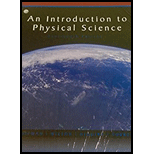
(a)
Balance and complete the given reaction:
K 2 SO 4 ( aq ) + PbNO 3 ( aq ) →
(a)
Answer to Problem 12E
Explanation of Solution
Given Info: The given chemical reaction is a double-replacement reaction.
Explanation:
A reaction in which positive ion of one reactant combines with negative ion of another reactant to form products is known as a double-replacement reaction.
In the given reaction, the positive ion
The double-replacement reaction of
In the above reaction, there are two potassium atoms and two
Conclusion:
Therefore, the balanced chemical reaction is written as,
(b)
Balance and complete the given reaction:
K 3 PO 4 ( aq ) + CaBr 2 ( aq ) →
(b)
Answer to Problem 12E
Explanation of Solution
Given Info: The given chemical reaction is a double-replacement reaction.
Explanation:
A reaction in which positive ion of one reactant combines with negative ion of another reactant to form products is known as a double-replacement reaction.
In the given reaction, the positive ion
The double-replacement reaction of
In the above reaction, there is one
In the above reaction, there are six potassium atoms, one calcium atom and two bromine atoms on the reactant side. There are three calcium atoms, one potassium atom and one bromine atom on the product side. Therefore, multiply
The balanced chemical equation is written as,
Conclusion:
Therefore, the balanced chemical reaction is written as,
Want to see more full solutions like this?
Chapter 13 Solutions
INTRO.TO PHYSICAL SCIENCE NSU PKG >IC<
- A second order reaction has a differential form of -d[A]/dt = k[A]?. Using your knowledge in integrating, provide an equation for second order reaction in terms of [A]. Show your complete solution.arrow_forwardFor the following reaction, 17.0 grams of magnesium nitride are allowed to react with 13.0 grams of water. magnesium nitride(s) + water(1)→ magnesium hydroxide(aq) + ammonia(aq) What is the maximum amount of magnesium hydroxide that can be formed? Mass= 9 What is the FORMULA for the limiting reactant? What amount of the excess reactant remains after the reaction is complete? Mass= 9arrow_forward12:10 1 Question 23 of 25 Submit Identify the molecularity of the elementary reaction below: 2NO(g) + Br2(g) → 2NOBr(g) A) unimolecular B) bimolecular C) termolecular D) quadmoleculararrow_forward
 An Introduction to Physical SciencePhysicsISBN:9781305079137Author:James Shipman, Jerry D. Wilson, Charles A. Higgins, Omar TorresPublisher:Cengage Learning
An Introduction to Physical SciencePhysicsISBN:9781305079137Author:James Shipman, Jerry D. Wilson, Charles A. Higgins, Omar TorresPublisher:Cengage Learning

